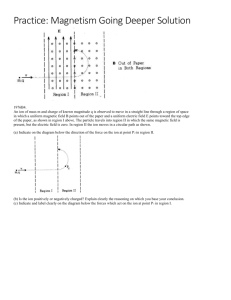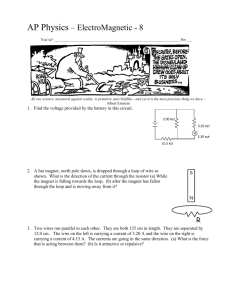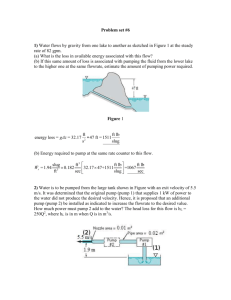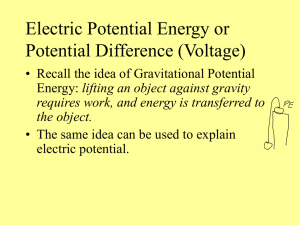Electron motion
advertisement
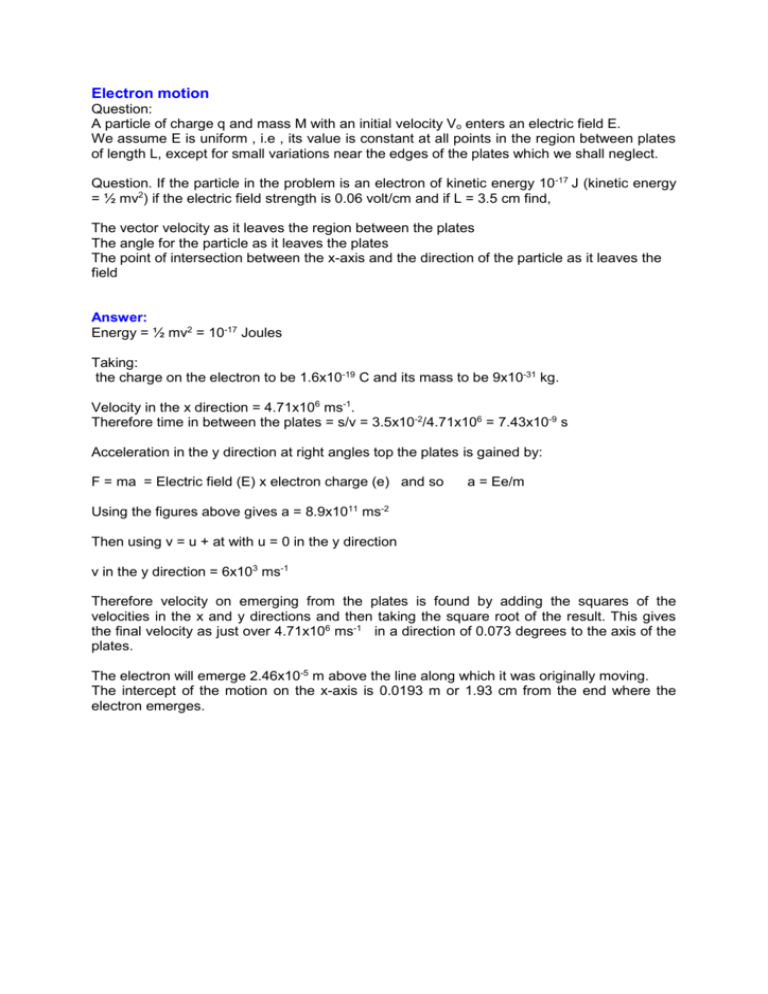
Electron motion Question: A particle of charge q and mass M with an initial velocity Vo enters an electric field E. We assume E is uniform , i.e , its value is constant at all points in the region between plates of length L, except for small variations near the edges of the plates which we shall neglect. Question. If the particle in the problem is an electron of kinetic energy 10-17 J (kinetic energy = ½ mv2) if the electric field strength is 0.06 volt/cm and if L = 3.5 cm find, The vector velocity as it leaves the region between the plates The angle for the particle as it leaves the plates The point of intersection between the x-axis and the direction of the particle as it leaves the field Answer: Energy = ½ mv2 = 10-17 Joules Taking: the charge on the electron to be 1.6x10-19 C and its mass to be 9x10-31 kg. Velocity in the x direction = 4.71x106 ms-1. Therefore time in between the plates = s/v = 3.5x10-2/4.71x106 = 7.43x10-9 s Acceleration in the y direction at right angles top the plates is gained by: F = ma = Electric field (E) x electron charge (e) and so a = Ee/m Using the figures above gives a = 8.9x1011 ms-2 Then using v = u + at with u = 0 in the y direction v in the y direction = 6x103 ms-1 Therefore velocity on emerging from the plates is found by adding the squares of the velocities in the x and y directions and then taking the square root of the result. This gives the final velocity as just over 4.71x106 ms-1 in a direction of 0.073 degrees to the axis of the plates. The electron will emerge 2.46x10-5 m above the line along which it was originally moving. The intercept of the motion on the x-axis is 0.0193 m or 1.93 cm from the end where the electron emerges.


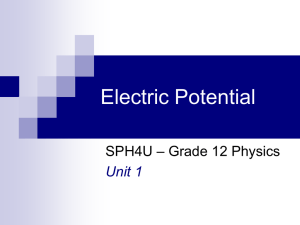
![Hints to Assignment #7 -- 8.022 [1] Transforming velocities](http://s2.studylib.net/store/data/013604148_1-3d9271f99177c85a7e62a5b153f4c4ea-300x300.png)
